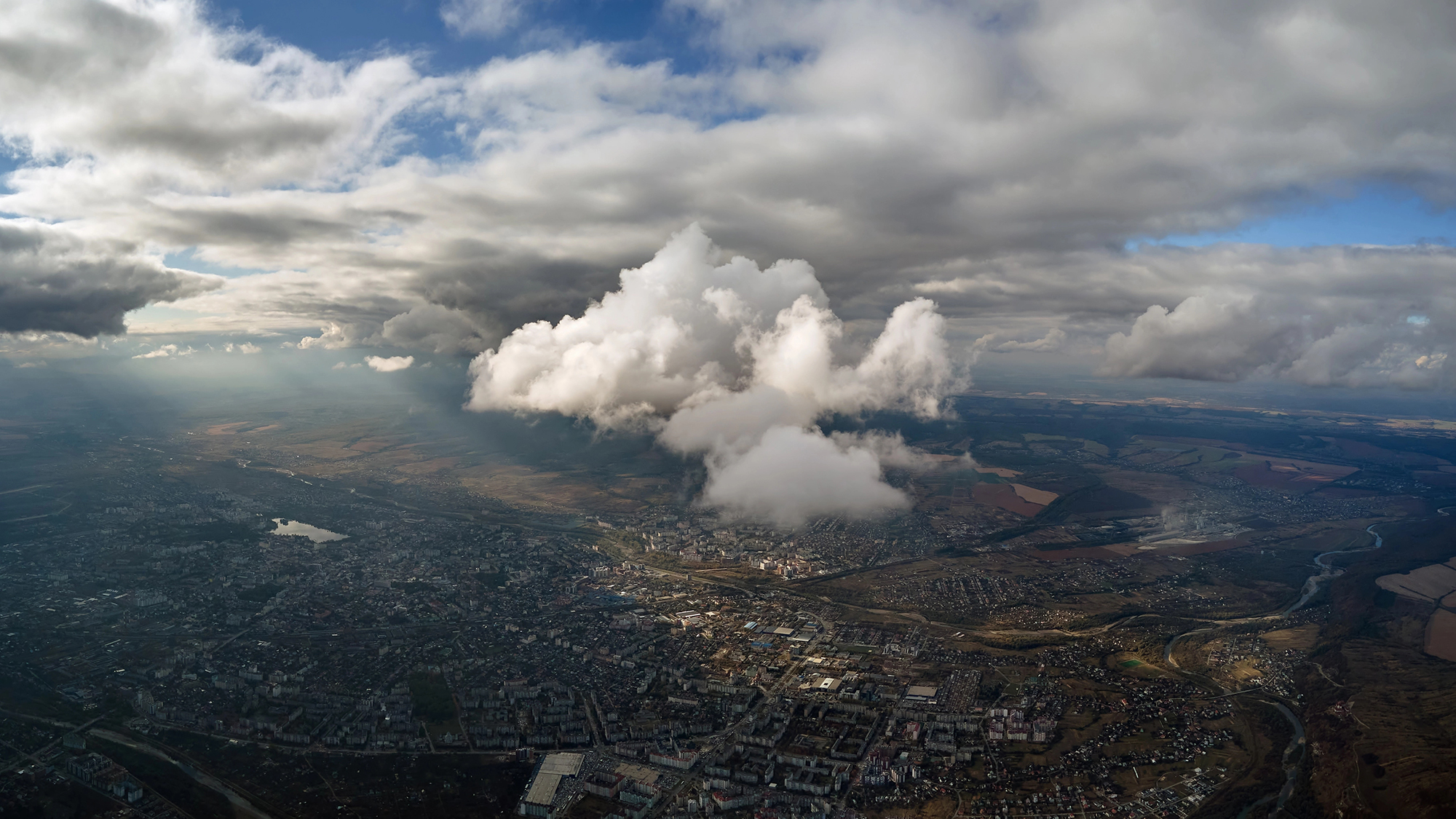
Beneath a blue sky, near poofs of white clouds, there’s a microbial superhighway hidden in plain sight, a new study suggests. Living microscopic bacteria and fungi are moving more than 1,200 miles between locations, traveling on winds about 10,000 feet above the ground, according to research published September 9 in the journal PNAS.
The findings could have implications for human health and the continued spread of drug-resistant genes among pathogens around the globe. An unexpected and unsettling number of these microbes circulating far above the surface are potentially disease-causing and some are resistant to multiple antibiotics, according to the analysis.
“We were not supposed to find anything like this,” says lead study author Xavier Rodó, a computational ecologist and research professor at the Barcelona Institute for Global Health, where he leads the climate and health group. It’s “detection of an unprecedented diversity of microbial taxa at heights [far above the planetary boundary layer],” he adds.
From 10 different sampling flights over Japan, Rodó and his colleagues used genetic analysis to identify 266 fungal and 305 bacterial genera, which he says likely represent upwards of 2,000 total species. Based on their assessment of air currents and other trace compounds found in the samples, the researchers determined these microbes originated in agricultural regions of Northeast Asia and were carried about 1,200 miles through the atmosphere into Japanese airspace, where they slowly floated downward towards Earth’s surface. Many of the microbes detected up high, were also found lower down, implying the bacteria and fungi are making it into our immediate environment.
“We were not supposed to find anything like this.”
Not all microbes are harmful, but, notably, more than one third of the collected and ID’d organisms in this case were pathogens known to cause human disease in the correct exposure context. The scientists also found that at least some of the microbes had survived their arduous, atmospheric journey and brought multidrug antibiotic resistance with them. They managed to culture a handful of the germs, growing colonies on petri dishes. In a few instances, these colonies were impervious to more than one antimicrobial drug.
The findings don’t prove that all of these itinerant microbes are making people sick, nor that the next pandemic will descend from the sky, emphasizes Rodó. “People are not getting ill everywhere in very strange ways, so we must think that most healthy immune systems can cope with [this airborne germ load],” he says. “We are not saying that epidemics will be seeded from distant places.”
Still, the study suggests atmospheric transport of microbes is something worth considering and paying attention to–especially when it comes to understanding the troubling rise of antimicrobial resistance. “What is clear is that there is this biodiversity seeding across far distances,” Rodó says. “Of course, if the bugs that are distributed have resistant genes, then you now have those being introduced into a new community, which could be worrisome.”
It’s previously been well-established that particles carried by wind over long-distances can cause trouble for people far away from the source of that pollution. Research has linked Saharan dust storms, for instance, with asthma in the Caribbean. Yet the biotic community thousands of feet off the ground and its impacts on global health is poorly understood.
Some studies suggest associations between those same distant Saharan dust storms and meningitis outbreaks across the Atlantic Ocean. Valley fever, a disease caused by a fungus prevalent in the southwestern U.S., is also correlated with dust storms, according to some analyses. Past research from Rodó and others has suggested that outbreaks of the mysterious Kawasaki disease might be linked with wind currents. Even plant pathogens may be hitching long-distance rides on the wind. But it’s not generally thought that most microorganisms make and survive such long-distance journeys. This week’s research implies they do.
“They’re showing there’s a really large number of species up there, percolating around that way,” which is novel, says Jeremey Gernand, an associate professor of environmental health and safety engineering at Penn State University who was uninvolved in the new research. 10,000 feet up in the atmosphere is a tough place to be. It’s full of intense solar radiation, cold, and subject to lots of temperature and moisture changes. “These bacteria and fungi stay alive through all that,” Gernand notes. “It’s really interesting.”
However, he echoes Rodó’s caution about interpreting what that means for human infection risk. When it comes to pathogens, dosage is important. “We know a lot about how much of an undesired bacteria can be in our food or water before it makes us sick,” Gernand says. In contrast “we very rarely have that kind of information for inhaled pathogens,” he adds. Healthy immune systems can generally manage individual interlopers, after all, none of the air we breathe in regularly is anywhere near sterile. It’s unclear from the new findings what concentration of each pathogen is being transported, which is something Gernand would like to see follow-up work evaluating.
Another limitation of the study is that it examines one place at just a few timepoints. “It doesn’t really give us much to go on as far as how consistent these sorts of exposures are in other places, at other times of year,” Gernand says. Yet still, he imagines “this is probably happening everywhere,” based on his own research into the intercontinental movement of particulate pollution.
A small silver lining amid the microbe clouds: the atmosphere could prove another place to monitor global health. The Covid-19 pandemic showed how valuable early warning systems like wastewater tracking can be to determine what’s going on with a disease and prepare and respond accordingly. With more research, Rodó suggests, air collection flights could become a useful method for assessing exposure and infection risk.

